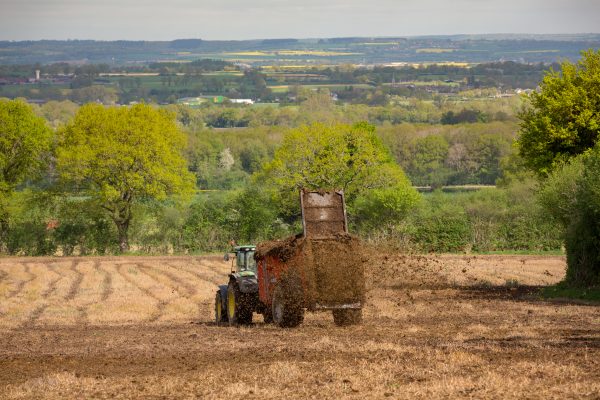The economic effects of utilising digestate spreading and storage

Digestate spreading is a method of fertilisation that revolves around the application of digestate, a nutrient-rich product that is formed through anaerobic digestion. Digestate is made up of a mixture of indigestible material and deceased microorganisms, as opposed to compost, which is formed using anaerobic microorganisms and requires oxygen.
Digestate is applied to the field using a spreader, which ensures that the product is evenly distributed across the ground, thus aiding in the treatment of nutrient-deficient soil and almost guarantees the effective growth of crops moving forward.
Benefits to farmers
Compared to artificial fertilisers, digestate is more economical, primarily due to lower production and spreading costs, making it cheaper per acre for many farmers. In addition to this, it is more sustainable. Digestate is produced as a byproduct of biogas at anaerobic digestion (AD) plants, making it a more viable product, as it is energy generated from waste.
Digestate is consistently richer in nutrients (including nitrogen, phosphate and potash), in comparison to both artificial fertiliser and traditional slurry (in which the nutritional value can fluctuate depending on the type used). This allows farmers to be able to accurately predict the successes of their harvests if there is a set number of nutrients contained in the product.
Finally, digestate contains organic matter. The presence of organic matter in soil has a broader positive impact on the local ecosystem and can result in better rooting structure for plants, healthier worm activity and improved nutrient uptake, thus further reinforcing the sustainability of the product.
Digestate production and application
Digestate can be produced in three specifications: whole, liquor and fibre. Whole digestate spread is a similar consistency to the slurry produced by livestock and is typically less than 5% dry matter. Subsequently, liquor is liquid-based, with most (or all) if the dry matter removed, and fibre closely resembles compost and is primarily composed of a solid material and the digestate separate.
For the farmer to guarantee the optimum effectiveness of both digestate spreading and nitrogen absorption, the application of digestate should be carried out from late winter to the end of summer. It would be counterproductive to spread during the autumn months, as some plants will be unable to absorb nitrogen effectively, while others will have no nitrogen requirement.
Land suitability should be assessed before the application of digestate. Farmers should be mindful, and avoid spreading if the ground is frozen, waterlogged, or there is heavy rain forecasted. Spreading will not be as effective during prolonged dry periods, or if the soil has dried and cracked down to the field drains, or has sub-soiled over the drains in the previous twelve months.
In addition to this, the digestate application should be avoided if the land in question is positioned within 10 metres of a ditch, pond or water surface – or within 50 metres of a water supply used by humans or dairy farms (including springs, boreholes and reservoirs).
Digestate storage solutions
There are many storage options readily available for digestate, ranging from universal solutions to more contemporary and bespoke alternatives.
One of the more common methods of storage is the use of a tank. Many tanks do not require a concrete surface beneath them, or any arduous ground preparation (except for ensuring that the intended surface is level). The construction of tanks can often take place in under 47 hours making them the ideal storage solution for digestate, as they allow farmers to plan suitable spreading times, while also ensuring that no loss of nutrients or product (or subsequent ROI) occurs.
Lagoons are a more permanent storage solution for digestate. They are equipped with floating covers, that not only protect the product from the rain, but also reduce the amount of gas that escapes from the digestate and into the atmosphere and nearby bodies of water ( reducing potential phosphate pollution).
Despite most lagoons having a size restriction (that is likely to be in the region of around 10,000m3), it is possible to obtain bespoke options that are best suited to your needs.





